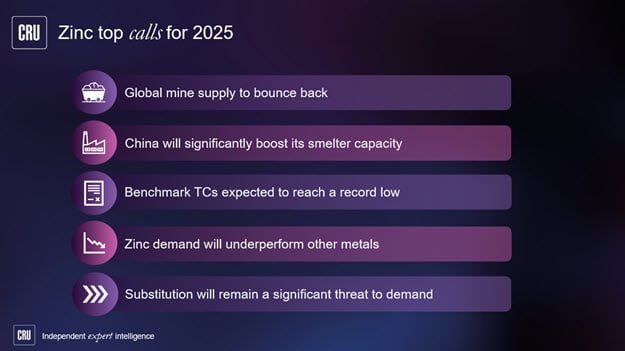Although the new US administration has already implemented tariffs on steel and aluminium which include EU producers, President Trump has so far not implemented broader tariffs on downstream European goods, which account for the majority of imports from the EU. However, the USTR and Department of Commerce investigation into reciprocal tariffs and other potentially ‘trade-distortive’ measures, such as VAT, suggests there is a high risk of this happening soon. As such, in this Insight we outline our US-EU trade war scenarios, highlighting that EU manufacturing has the most to lose if the trade links between the two regions deteriorate further.
The EU is the single largest source of imports to the US. Nearly 90% of EU exports to the US in 2023 were manufactured goods. In our base case scenario, we expect the US to implement additional selective tariffs on the EU, which will increase inflation in the US and create headwinds to any recovery in IP.
In a more serious downside scenario where the US applies a blanket of 10% tariffs, the impacts may be enough to wipe out any recovery in European IP, although a recession in GDP terms would be avoided. However, such a move would also have greater costs for US consumers and firms, and is therefore not the most likely scenario in our view.
Exposure to the US is manageable in aggregate, but important for particular sectors
The EU’s exports to the US accounted for only 4.4% of EU’s GDP in 2024. However, they are proportionally much more important for manufacturing. The vast majority of EU exports to the US are manufactured goods, accounting for 89% in 2023.
The biggest EU exporting countries to the US are Germany, Italy and Ireland, with the former enjoying the largest trade surplus with the US. Vehicles account for 8% of EU exports to the US, most of which are US imports from Germany. Germany’s economy contracted in 2023 and 2024, with the industrial sector still struggling to find its footing. Given weak domestic demand and Germany already facing difficulties in exporting to China as robustly as it did before, tariffs from the US would be a very unwelcome headwind and reduce the chances of a recovery in 2025.
Three scenarios for US-EU trade policy
In this Insight we outline three scenarios for how the US-EU trade relationship might progress this year:
- In our upside case, given inflation in the US has already exceeded expectations in January, Trump might choose to be more selective with his tariffs, using the threat of tariffs only as a political tool with the EU, e.g. to extract commitments on increasing military spending or purchasing more US LNG.
- In our base case, we expect the US to introduce selective tariffs on the EU in early Q2. If history is any indication, the EU will hit back. Trump’s administration aims to narrow the US trade deficit ($918.4 bn in 2024) with the EU, retaliating against non-tariff barriers too. The EU’s VAT and digital service taxes have been criticised by the Trump administration as an unfair trade practice. Regulations ranging from agricultural standards to weight restrictions on cars could be targeted in order to harm each other.
- In the downside case, we consider much higher US-EU mutual tariffs. If the US imposes a 10% universal tariff on EU exports, by our estimate this would shave 0.1 ppts off EU GDP in 2025 and 0.3 ppts in 2026. We would see the same growth reduction for Germany and Italy and slightly smaller for France and Spain.
As a CRU Global Economic Outlook subscriber you can read the full Insight and details as well as our discussion on the economic implications of these scenarios here. If you are keen to hear more about our views on Europe and the global economy, please refer to CRU’s Global Economic Outlook or email sales@crugroup.com if you are interested.














